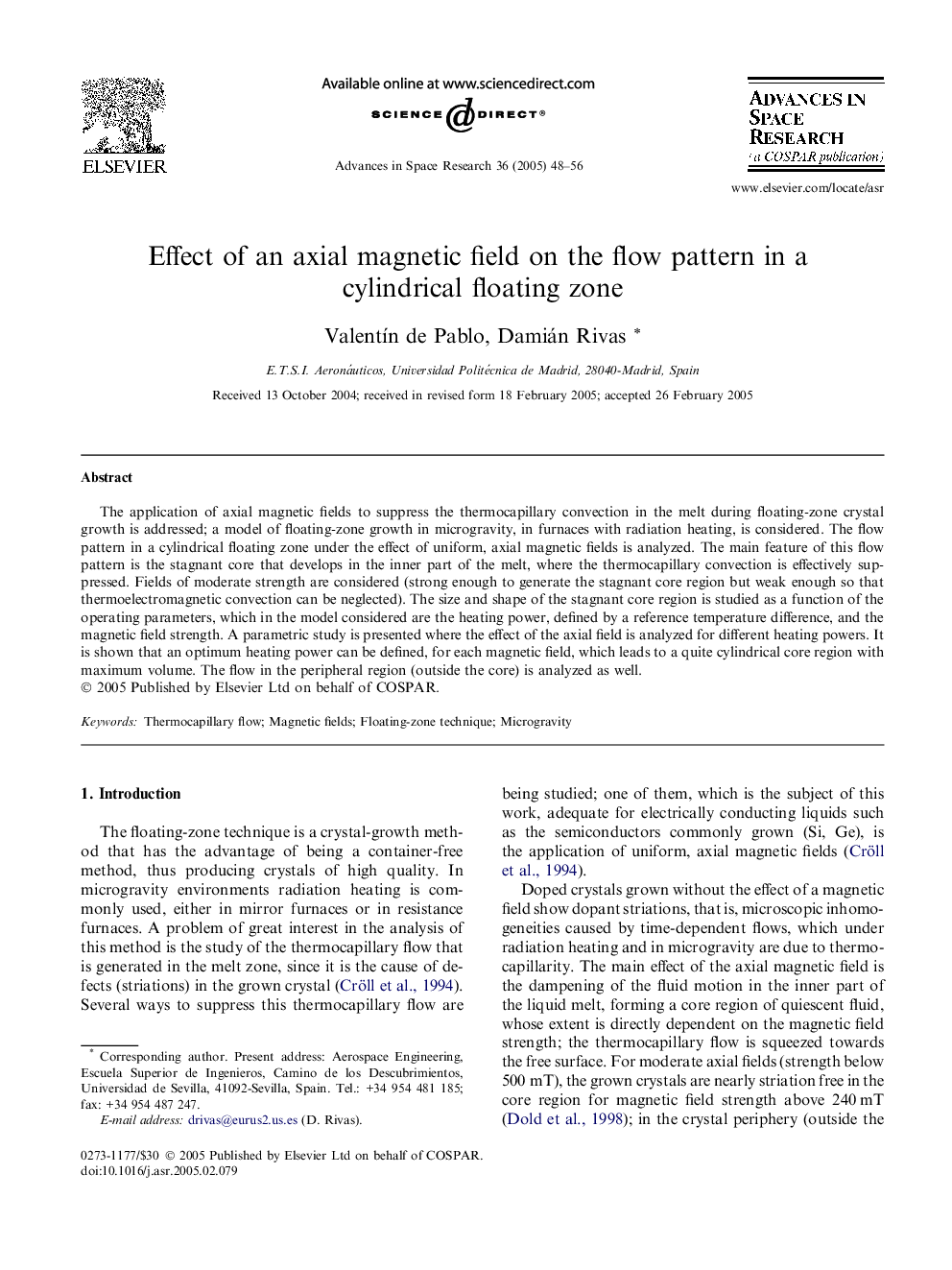| Article ID | Journal | Published Year | Pages | File Type |
|---|---|---|---|---|
| 10695049 | Advances in Space Research | 2005 | 9 Pages |
Abstract
The application of axial magnetic fields to suppress the thermocapillary convection in the melt during floating-zone crystal growth is addressed; a model of floating-zone growth in microgravity, in furnaces with radiation heating, is considered. The flow pattern in a cylindrical floating zone under the effect of uniform, axial magnetic fields is analyzed. The main feature of this flow pattern is the stagnant core that develops in the inner part of the melt, where the thermocapillary convection is effectively suppressed. Fields of moderate strength are considered (strong enough to generate the stagnant core region but weak enough so that thermoelectromagnetic convection can be neglected). The size and shape of the stagnant core region is studied as a function of the operating parameters, which in the model considered are the heating power, defined by a reference temperature difference, and the magnetic field strength. A parametric study is presented where the effect of the axial field is analyzed for different heating powers. It is shown that an optimum heating power can be defined, for each magnetic field, which leads to a quite cylindrical core region with maximum volume. The flow in the peripheral region (outside the core) is analyzed as well.
Related Topics
Physical Sciences and Engineering
Earth and Planetary Sciences
Space and Planetary Science
Authors
ValentÃn de Pablo, Damián Rivas,
